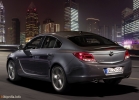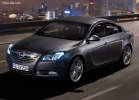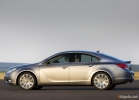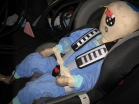Test Drive Opel Insignia Hatchback since 2008 Sedan
We try tooth universal Opel Insignia Sports Tourer
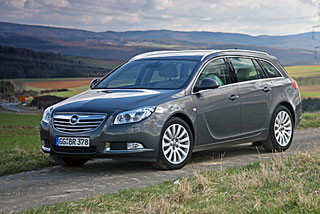 When everything is fine, there is no special sense to deal with changes. Although in most cases automakers are linked, modernize and replace the models without waiting until they obstruct morally. Timely update the key to success is all well known
When everything is fine, there is no special sense to deal with changes. Although in most cases automakers are linked, modernize and replace the models without waiting until they obstruct morally. Timely update the key to success is all well known At first, after the debut in 2002, Opel Vectra C was not bad, in Europe in the segment D accounted for about 10% of sales. But the farther into the forest, the worse the car, what is called did not go. Whether the faceted design is tired of everyone, whether the technical component has done and may have tried competitors? In general, to reanimate your affairs in the D-class, the Germans prepared a new iron and surname. Insignia.
The concept of Insignia Opel showed in Frankfurt back in 2003. It was a healthy five-door car with falling, like cars with a body coupe, to the roof stern. It turned out insignia to the scratchikov controversial, by the way, not least due to the rear-wheel drive (!) Transmission. Hasom to relatives with Omega? Looks like.
But the rear-wheel drive GM-sheep on the concept was not allowed, but many stylistic solutions applied in a six-year-old prototype, transferred to the serial machine. It turned out fresh, bright, concise and nice ... and, that is not unavailable, in the spirit of the latest trends. From straight, corners and sharp faces, designers refused, preferred with lectal lines and smoothly flowing from one to another surfaces ... Goodbye, boring and suitcase vectra!
Many will say: here, they say, drunk Opel. Here Insignia on the Passat CC is similar, there on Mercedes CLC Looks like a father! And the Sports Tourer wagon saw? He is behind the poured Audi Q5!. Fashion. She, as you know, dictates a similarity. From the plagiarism is not going anywhere. The fate of successful solutions is always one to be written off under the copy and reproduced again. And the design concerns the technique. You do not want to be in loser it is obliged to apply popular proven solutions. Original learn? Are you from the strengths of this? Then, it's OK.
Insignia was based on the mid-size GM Epsilon II platform (derived from the first generation Epsilon Global Platform), which will stand new Saab 9-3 / 9-5 and the BUICK, Saturn and Holden family machine. Front McPherson, behind a new four-tempered ... compared to Vectra Insignia has become larger. In length, the increase was 230 mm (up to 4830 mm, and the station wagon from the nose to the tail in general is 4908 mm), the base is elongated by 37 mm (up to 2737 mm).
I sit behind the steering wheel, adjusting the management authorities as if I returned home. The ranges are wide, all organs in their places. Spaces in sufficiency. But where does the feeling of dejava come from? Well, for sure! Dashboard, steering wheel and steering switches all as on Chevrolet Cruze. Or vice versa? Behind, too, well with an increase in 190 cm sat freely and conveniently, thanks to the long base and molded for two backs.
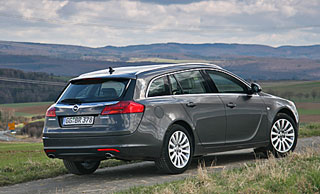 The basic chassis in Insignia is deprived of all tricks. But in more expensive variations and all all-wheel drive versions, there is a Flexride system created by Sachs by joint efforts. It heads the shock absorbers, steering amplifier, stabilization system and full drive.
The basic chassis in Insignia is deprived of all tricks. But in more expensive variations and all all-wheel drive versions, there is a Flexride system created by Sachs by joint efforts. It heads the shock absorbers, steering amplifier, stabilization system and full drive. With leaning shock absorbers in Tour mode, the insignia is comfortable and plumbing. For unhurried family movements just right. But by narrow winding paths near Frankfurt with many steep turns and spills with such settings you will not quickly go fast.
I click the Sport button, and the car seemed to be replaced. The devices are now shining not neutral white, but red. The suspension became a tough, the steering wheel was sick, the car reacts sharper on the gas pedal (on all-wheel drive versions, the blocking clutch comes sharply). From rolls and trail is not left. Overtaking to do was more pleasant and safer.
Insignia Read more Repeats the profile of the road, informs about the joints on the roadbed, but most importantly, it is incomparably better reacting to the steering wheel and more easily goes into turns. In this case, the stabilization system in Sport mode comes into operation noticeably later. Informative and sharp steering wheel adds pleasure. But how is Insignia keeps the intended trajectory! Mm-Mm! By the way, Flexride and herself can react to changing road conditions, focusing on sensor readings.
Engines on Insignia Already nine pieces. The weakest 1.6-liter 115-strong gasoline atmospheric, the fastest civilian variation is equipped with a 260-strong turbocharged V6. On diesels (their four pieces from 110 to 190 hp), which will not reach Russia, failed to ride, but the 1,6-liter turbocharged Ecotec liked from gasoline engines. Stars from the sky lack the engine, but he is valuable to others. This motor can be described as sufficient. 180 horsepower (at 5500 rpm) and a torque plateau (from 2,200 rpm to 5500 rpm) in 230 Newton meters give a semi-trial machine a serious dynamics. The wagon (with the manual transmission) to 100 km / h gets at 9.2 s.
Yes, there are few traction on low revs, but when the engine will take an engine to 3500-4000 rpm, Insignia kicks gets. If you do not lower the turns below this turn, you can not badly zoom. And the payroll for annealing will not be so expensive. We during testing accounted for 14 liters per 100 km. According to the passport, the mixed consumption is much lower than 7.7 liters per hundred kilometers.
However, the one who craves the speakers and wants to ride as a white person with an automatic transmission, it will be necessary, at a minimum, pay attention to the versions with a two-liter 220-stroke motor. This unit is able to deliver the sea of \u200b\u200bpleasure, a simply six-speed hydrotransformer machine (it is not put on weak gasoline versions) this will make it even more. And there is still a wonderful 2.8-liter V6. This is generally a hurricane!
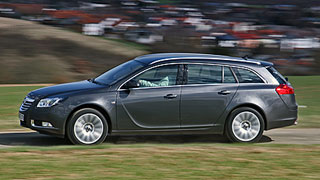 Who gets slipping at the start and triggering of traction control, can choose 4x4 modification, which has a generation Haldex IV coupling (like on all-wheel drive Skoda, Volkswagen and Saab). All-wheel drive on unreliable coatings starts much more confident. By the way, in the fourth Haldex frictions always slightly fit, so that it is almost always about 10% of the traction on the rear axle (the distribution of torque over the axes 90:10). The coupling is almost always partially turned on, it can be completely blocked by almost instantly. In some cases, Haldex opens completely, for example, when the control system is triggered or in braking.
Who gets slipping at the start and triggering of traction control, can choose 4x4 modification, which has a generation Haldex IV coupling (like on all-wheel drive Skoda, Volkswagen and Saab). All-wheel drive on unreliable coatings starts much more confident. By the way, in the fourth Haldex frictions always slightly fit, so that it is almost always about 10% of the traction on the rear axle (the distribution of torque over the axes 90:10). The coupling is almost always partially turned on, it can be completely blocked by almost instantly. In some cases, Haldex opens completely, for example, when the control system is triggered or in braking. Insignia smarter and greed of many of their competitors. The car has become a platform for the debut of the Opel Eye system developed by Hella. The Opolev eye (goes as an option) observes signs and behind the position of the car on the roadbed with the help of a camera located in the top of the windshield.
The camera makes about 30 frames per second, and transmits the resulting images to the electronic brain of the system. It is processed in it and compared with images made in memory. As soon as the electronics defined the sign, the corresponding icon will be displayed on the dashboard immediately, and so that the driver does not make her appearance, a beep sound in the cabin.
The range of the system is about a hundred meters, in most cases it is enough to take action to the action that prescribes a sign. The position of the car on the Opel Eye road tracks, watching the road marking with the help of the same camera. As soon as the car starts monotonously to go to the side or swim through the strip, the system immediately hurt the driver.
And Opel Insignia gained AFL + adaptive light system (Adaptive Front Light). The light beam, due to the original design of the xenon headlamp, is able to look into turns, change the brightness and geometry of the black and white boundary depending on the conditions of movement. The operation of the system is based on the data obtained from the speed sensors, acceleration, the angle of rotation of the steering wheel, the rain sensor and the pairs of optical sensors that are under the windshield.
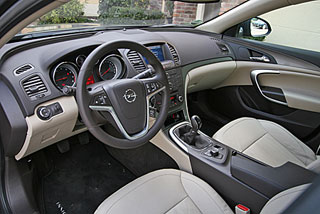 The system, notes standing on the side of the sidelines and counter cars, allows us to conclude about the environment in which the car is located. For example, in the city at low speeds, the light beam is wider and beats nearby. Brightness is somewhat reduced. On high-speed tracks, the range increases in proportion to the speed growth, the viewing angle, the shape of the light spot and the inclination of the beam at the same time can also change significantly depending on the situation. In total, 11 modes of operation are provided.
The system, notes standing on the side of the sidelines and counter cars, allows us to conclude about the environment in which the car is located. For example, in the city at low speeds, the light beam is wider and beats nearby. Brightness is somewhat reduced. On high-speed tracks, the range increases in proportion to the speed growth, the viewing angle, the shape of the light spot and the inclination of the beam at the same time can also change significantly depending on the situation. In total, 11 modes of operation are provided. The world premiere of Insignia (in the UK Opel is sold under the Vauxhall brand) took place at the London International Auto Show at the end of July last year. In Europe, the car went to sale in February (wagon just now). China Opel Insignia will be produced at the plant in Shanghai and sold under the name of Buick Regal.
We already have orders for the car, but in the free sale Insignia will appear in July. But only with the bodies of the sedan (from 866 300 rubles.) And hatchback (from 881 300 rubles). Universal version of Sports Tourer (from 911 300 rubles), which we had to roll back in Frankfurt, have to wait until autumn. In the meantime, the rivals rule the ball on the Russian market. Yes, such! He's head as you like: Volkswagen Passat (from 711 465 rubles) with a new modification of CC (from 1,043 460 rubles), Mazda6 (from 773,000 rubles), Ford Mondeo (from 546 300 rubles), Renault Laguna ( From 723 500 rubles.), Peugeot 407 (from 695,000 rubles), Citroen C5 (from 717,000 rubles) Soon the new Toyota Avensis will be added to them. Newbie to wed up this company will oh, how not easy.
Although, how to see after all the car turned out. Externally succeeded. The chassis with the possibility of interactive setting GM-sheep was made simply wonderful. The functionality is also under one. The whole question is whether buyers will be ready to pay for Insignia noticeably more than competitors cost?
Vitaly Kabyshev
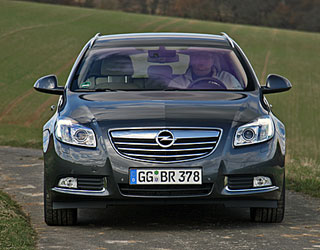
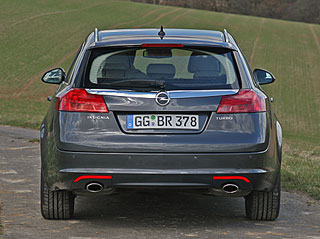
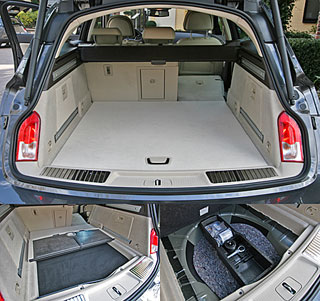
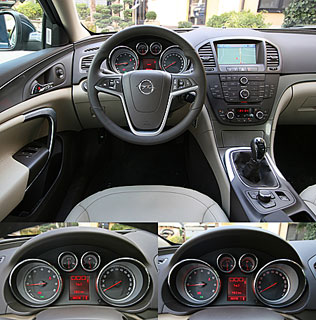
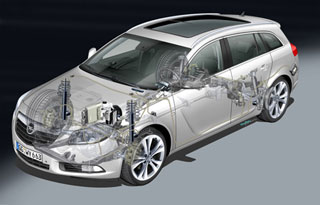
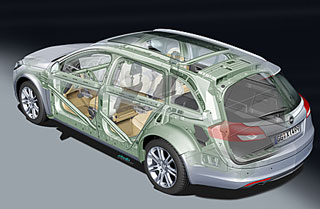
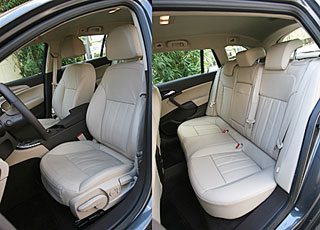
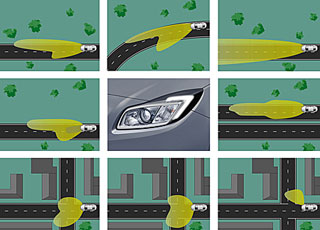
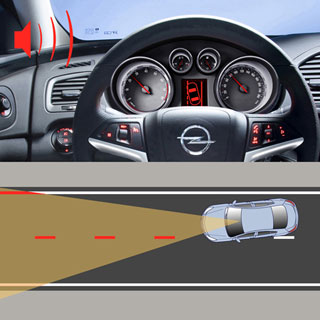
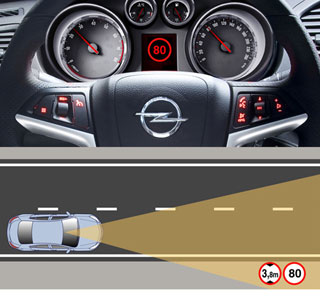
A source: AUTO.Mail.Ru.
Crash Test Opel Insignia Hatchback since 2008
Crash Test: Details35%
Driver and passengers
14%
Pedestrians
39%
Child passengers



